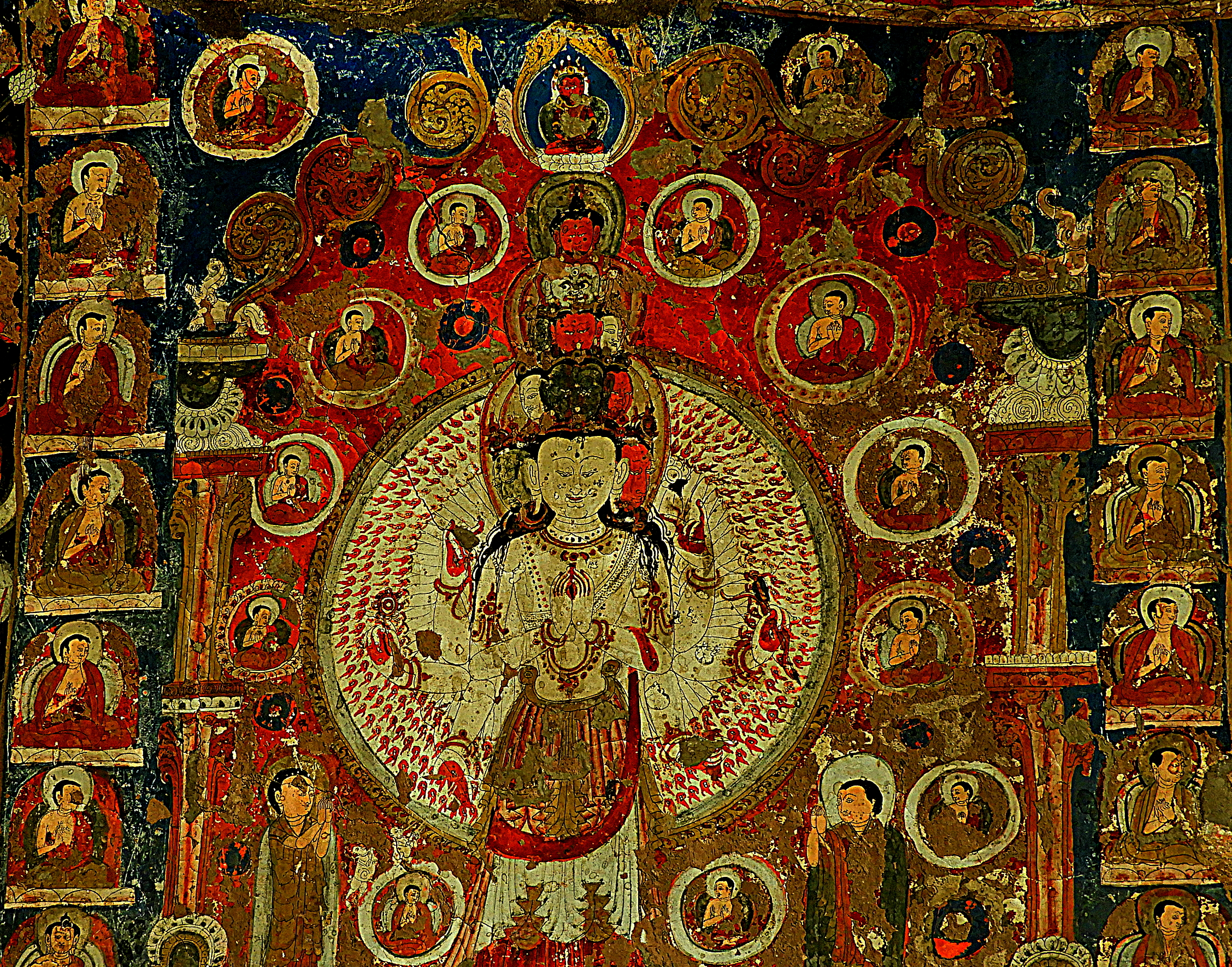Tibetan Buddhist wall paintings on:
[Wikipedia]
[Google]
[Amazon]
 Most
Most

 The support for wall paintings is made of
The support for wall paintings is made of
 Most
Most Tibetan Buddhist
Tibetan Buddhism (also referred to as Indo-Tibetan Buddhism, Lamaism, Lamaistic Buddhism, Himalayan Buddhism, and Northern Buddhism) is the form of Buddhism practiced in Tibet and Bhutan, where it is the dominant religion. It is also in majo ...
monasteries, temples and other religious structures in the Himalayas
The Himalayas, or Himalaya (; ; ), is a mountain range in Asia, separating the plains of the Indian subcontinent from the Tibetan Plateau. The range has some of the planet's highest peaks, including the very highest, Mount Everest. Over 100 ...
were decorated with Tibetan Buddhist wall paintings. Despite much destruction in Tibet itself, many of these survive, the dry climate of the Tibetan plateau
The Tibetan Plateau (, also known as the Qinghai–Tibet Plateau or the Qing–Zang Plateau () or as the Himalayan Plateau in India, is a vast elevated plateau located at the intersection of Central, South and East Asia covering most of the Ti ...
assisting their survival, as the wet Indian climate has reduced survival of paintings from there. There are some regional differences, but the techniques described here cover the traditional wall paintings across this area. The wall paintings were executed on earthen plaster with the secco-technique. A secco-technique is a painting technique in which the pigments with their binder are employed to paint onto a dry (Italian: secco) wall.
Painting technique

 The support for wall paintings is made of
The support for wall paintings is made of earthen plaster
Earthen plaster (adobe plaster, dagga) is a blend of clay, fine aggregate, and fiber. Other common additives include pigments, Lime (mineral), lime, casein, prickly pear cactus juice (''Opuntia''), manure, and linseed oil. Earthen plaster is usua ...
, usually consisting of more than one layer of earthen plaster, in which the last layer was rendered as smoothly as possible.
The support was covered by a smoothened ground, generally in white. Materials employed for the ground may be kaolin, chalk or gypsum, or any other white material deriving from an inert mineral.
To organise the painting, preliminary sketches were carried out. Generally this involved the geometric layout of the design with the help of snapped lines and/or rulers. Compasses were employed mainly for the construction of mandalas
A mandala ( sa, मण्डल, maṇḍala, circle, ) is a geometric configuration of symbols. In various spiritual traditions, mandalas may be employed for focusing attention of practitioners and adepts, as a spiritual guidance tool, for e ...
. Figures were roughly sketched, and then rendered with precise contours. These outlines are usually in black. Repetitive designs were in some cases achieved with the use of stencils
Stencilling produces an image or pattern on a surface, by applying pigment to a surface through an intermediate object, with designed holes in the intermediate object, to create a pattern or image on a surface, by allowing the pigment to reach ...
.
Traditionally, colour codes were employed to accelerate and simplify the colouring of the various ornaments and figures. For this purpose each section was given a number from 1-9 or an abbreviation of the name of the colour. Some paintings were embellished with raised ornaments (pastiglia-technique). Either a semi-liquid paste was applied to the painting surface, or a stamp had been previously produced from a mould and then applied onto the painting surface. Depending on the final visible colour of a painting, specific colours for the underpainting were employed. An ochre for example has an underpainting in a bright yellow. Similar to Tibetan paintings, the traditional painting was carried out with shading systems, such as a dry or wet shading system. Shading may be obtained with glazes, or with one of the dry shading systems, such as the dot-shading technique in which minuscule dots of colour cover the paintings surface. Specific details were then achieved with small paint brushes employing a variety of colours: black, white, ochre or red.
Specific ornaments of a representation were enriched with gold. This was either applied as a gold leaf
Gold leaf is gold that has been hammered into thin sheets (usually around 0.1 µm thick) by goldbeating and is often used for gilding. Gold leaf is available in a wide variety of karats and shades. The most commonly used gold is 22-kara ...
or as powder in a binder.
Notes
Further reading
* *von Schroeder, Ulrich. 2006. ''Empowered Masters: Tibetan Wall Paintings of Mahasiddhas at Gyantse''. (p. 224 pages with 91 colour illustrations). Chicago: Serindia Publications. {{Tibet related articles Buddhist temples in Tibet Tibetan art Tibetan painting Buddhist paintings